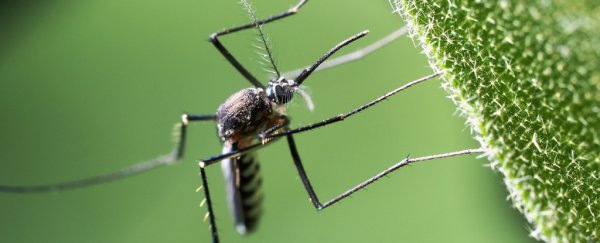The World Health Organisation (WHO) has called an emergency meeting to discuss measures to contain Zika virus, which has now been reported in 24 countries worldwide, according to figures from the US Centres for Disease Control and Prevention (CDC).
Of particular concern is the current outbreak taking place in South and Central America, a region in which the virus – which is transmitted by mosquitoes – is "spreading explosively", in the words of WHO's Director-General, Margaret Chan.
According to Chan, Zika virus, which was first isolated in 1947 from a monkey in the Zika forest of Uganda, could have been characterised as a "mild threat" to world health up until last year, when Brazil reported its first case of the disease.
"The situation today is dramatically different," Chan said in a speech in Geneva, Switzerland this week. "Last year, the virus was detected in the Americas… As of today, cases have been reported in 23 countries and territories in the region. The level of alarm is extremely high."
Health authorities are concerned as the recent outbreak has brought with it a steep increase in the birth of babies with abnormally small heads – a condition known as microcephaly – and also in cases of Guillain-Barre syndrome, a nervous system disorder. While a causal relationship between these conditions and Zika has not been authoritatively proven, it is nonetheless "strongly suspected" by scientists.
"The possible links, only recently suspected, have rapidly changed the risk profile of Zika, from a mild threat to one of alarming proportions," said Chan. "The increased incidence of microcephaly is particularly alarming, as it places a heart-breaking burden on families and communities."
Health authorities are quick to allay fears that most people in other countries – including the US, which borders the area of the most recent outbreak – are unlikely to be at risk from the virus.
"Right now I would say that the risk of Zika virus transmission over most of the United States is very low," William Reisen, editor of the Journal of Medical Entomology, told Sabrina Tavernise at The New York Times.
In part this is due to a different climate. Zika virus is chiefly transmitted by Aedes mosquitoes, which are mostly found in tropical regions, and different living circumstances in other countries – such as sealed environments, higher use of air conditioners for cooling, and greater mosquito controls – that help to disrupt the ease with which the insects could spread Zika.
It's also worth bearing in mind that the majority of those who are exposed to the virus do not get sick from it, although the potential risks, particularly to pregnant women and their babies, have seen multiple countries issue warnings over travel to affected areas.
The size of the current outbreak – Brazil alone has more than 1 million infected, and WHO has warned it expects to see up to 4 million infections in the region – has many worried, especially those in affected countries. Brazil announced this week it would deploy 220,000 troops on the streets to raise awareness of the infection.
All of this will inform WHO deliberations next week, when health representatives meet to decide whether the outbreak should be declared a public health emergency.
"The level of concern is high, as is the level of uncertainty," said Chan. "Questions abound. We need to get some answers quickly."
